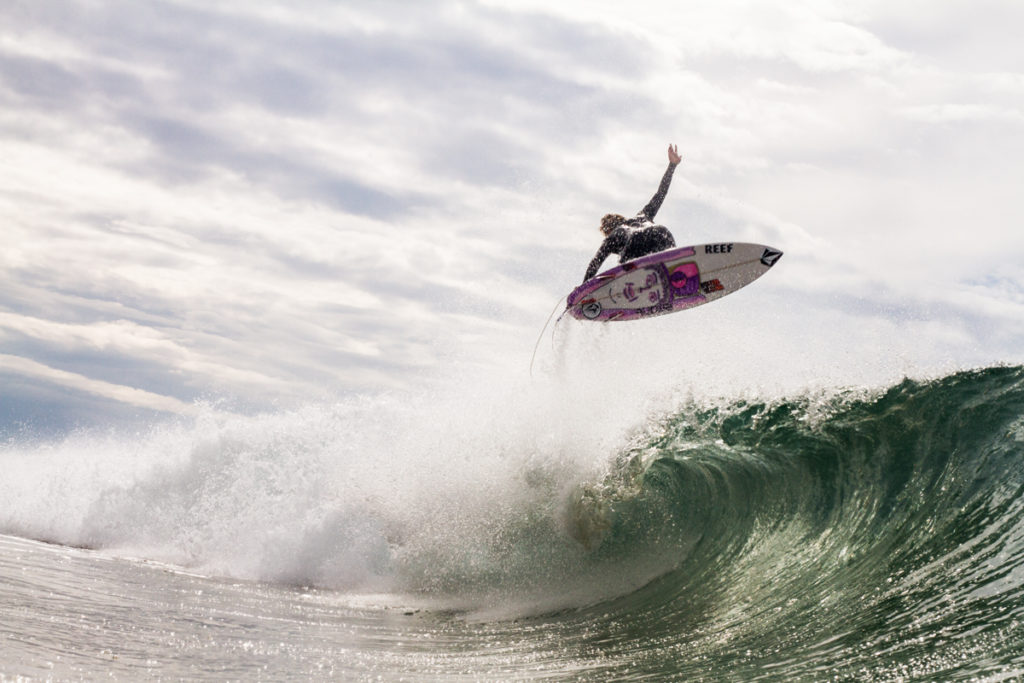Buy Now, Pay Later

Free Surfboard Advice
Customer Service 9am - 5pm (UK)
Trusted by Pyzel

If you’ve surfed in the same locations for years, experience will have taught you the best tide times. However, when you’re a beginner, how do you know whether high or low tide is preferable?
It can take years of practice to hone your natural wave-reading skills. Unless you’re familiar with the wave rhythms, you might miss the perfect surfing opportunity. There are benefits of high and low tide – and because every surf destination is different, it’s important to know what to look out for.
Some will agree the best tide for surfing is generally low, or an incoming medium tide. However, it’s important to keep in mind that a low tide on shallow surf breaks leaves less room between the water’s surface and the ocean floor.
Avoid shallow reef, rock obstacles and other potential hazards by getting to know the area where you’re surfing. Take care to stay safe!
Other surfers may prefer the bigger waves that can roll in at high tide. However, this isn’t recommended for beginners – it can carry its own risks.
You need to catch the perfect wave when the tide is just right. Some surf breaks send powerful and heavy waves all day long. Others produce rideable waves for only a short amount of time, until the tide changes.
Some surf breaks remain good until sea breezes herald choppy but rideable conditions. You need to know where that sweet spot is on the perfect wave. Every break has its favoured tides and most spots favour a “low going high” tide on the rise.
This is the “tidal push” that helps the forward momentum of the waves. The tide pushes in as the waves come in, creating a surge. Some surfers believe the outgoing tide can slightly counter the incoming momentum of the waves.
Like most good things, perfect wave conditions at high tide last only a short time. When the tide hits its peak and reaches its highest level of the day, the waves will soon turn choppy. Make the most of the big waves before this happens.
This doesn’t necessarily mean you won’t have fun in the surf break. It could even get less crowded at this point. However, for the most enjoyment, arrive on the rising tide for the best wave conditions.
Looking to catch waves breaking onshore at high tide is not good for beginners. Shorebreak surfing can be thrilling, but there’s more chance of damaging your board or injuring yourself. The heavy shore pounders should be left to the experienced surfers.
When the tide is incoming, the waves often increase in speed and height. When surfers hit a rising tide at the right time and location, it can give you two to three hours of solid swell.
Depending on the location, the middle tide can provide the sweet spot, with the waves remaining near-perfect before they reach the maximum high tide.
Most surf breaks are shallow at low tide, with deeper and wider barrels. Although this can be enjoyable, shallow surfing is always risky. Experience and local knowledge are key, especially when surfing over a hard ocean floor.
If you’re surfing as the tide starts going out at sunset, this can make for a memorable experience. If the outgoing tide exposes a sandbar or reef break and the conditions aren’t too choppy, it’s possible to surf until dusk on good waves, particularly if there is a strong groundswell.
Check the local tide times before surfing so you know what to expect. Look up an online chart, or get a simple smartphone app. You can also use a specialised tide-telling wristwatch to find out the times and levels before you set off.
Research has shown, in general, most surfers believe the best time for surfing begins about an hour after low tide and lasts until an hour before high tide. This provides at least four hours of excellent surfing time, probably more, which is enough for most surfers.
If you’re ready to go out now, visit the stock room at Ocean Magic for next working day despatch on a variety of high-quality surfboards for surfers of all standards.
© 2024 Ocean Magic – The Factory. All rights reserved. Company Number: 04664716. VAT Registered 807 8508 12

Get 10% off your first order!
Join the Lineup!